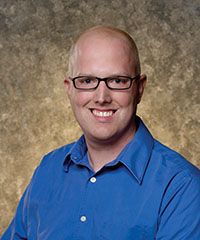I just returned from a trip that covered Tennessee, Alabama and Georgia. During this trip, I attended the University of Tennessee’s Equine Podiatry Conference featuring farrier Bob Pethick and equine veterinarian Greg Staller, both of Califon, N.J. Both delivered informative presentations and a joint demonstration that tremendously benefited those farriers and veterinarians in attendance. You can read more about one of Pethick’s presentation in the July/Aug. issue of AFJ. You should consider this seminar, as UT plans on hosting it again during mid-May 2016.
The driving force behind this conference is Dudley Hurst, the chief farrier for the university. He acted as emcee for this event and worked with the UT team to put this conference together.
Hurst is in a unique position that is shared with only five other farriers: of the 30 veterinary schools in the United States, six have a full-time resident farrier on staff. The others are Travis Burns at the Virginia-Maryland College of Veterinary Medicine, Steve Kraus at Cornell University, Jason Maki at Texas A&M University, Pat Reilly at the University of Pennsylvania and Doug Russo at Iowa State University. The 24 other universities have part-time farriers or farriers who operate under contract.
Going back to this full-time veterinary school farriers, one of their many job responsibilities is educating the veterinary students about horseshoeing through a combination of lectures and practical work.
In 2010, the Equine Veterinary Journal published a study that examined the farrier’s role in veterinary teaching hospitals. In summary, 15 (83%) farrier services provided professional education in clinical settings vs. 13 (72%) in lecture settings. The authors found that farrier services at these institutions “vary considerably in both nature and extent,” with education being among those.
An interesting follow-up examination by researchers may be how much instruction veterinary students receive in farriery while in school. For those students who are going into equine practice following school, how much instruction does the program (those with and without full-time farriers) mandate?
There is not a common farriery curriculum among these schools. It seems that the time is limited from a few to several hours in labs and lectures. For more in-depth education, the student will rely on electives. Speaking with Reilly and Kraus on this subject, both stressed that in addition to the university mandated education and electives available to students, their shops are always open to those who wish to learn more.
Looking at the broad base of knowledge that veterinary students in general undertake, I certainly can see why equine footcare doesn’t receive a lion’s share. Then for a veterinary student or graduate who wants a greater understanding of what a farrier does to address specific equine footcare needs, it requires a personal commitment and drive to obtain that knowledge. I think those students who have access to the six farriers who work full-time on campus have a distinct advantage over their peers who don’t. Having a full-time farrier who also serves as an instructor is a change the other schools should consider if they want to better prepare their students for working with farriers.







